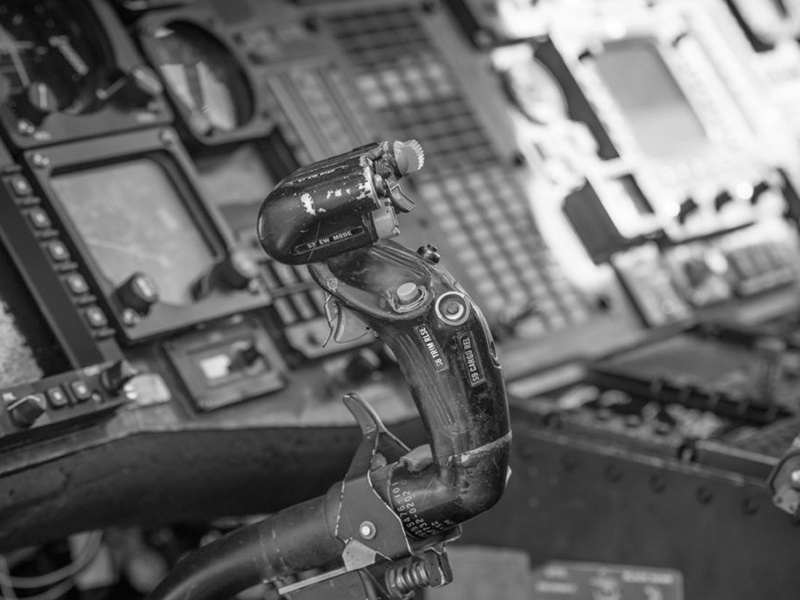


Boeing use yoke while airbus use the stick to control the aircraft. In aeronautics, these pieces of maneuverability are central to flight control.They are also designed for ease, comfort, and most importantly, movement to artificially establish association between the pilot and his machine.
While both modes of transition are essential to flight training — either one still requires fundamental flying skills, and preference is entirely up to debate, usually on the design and functional differences.
Stick
Stick controllers – side or centre joysticks – are technically very simple to install and use. They are commonly placed in aircrafts that are supported by fly-by-wire control systems, which is considered to be the most conventional in aircraft design. Joysticks are mechanically put together to serve both the pilot’s and copilot’s control inputs in flight operations and is centrally arranged on a two-seater flightdeck. They are usually accompanied with a maximized surface area of dials, buttons, and switches to help the pilots manage flight precisely.
It’s a popular choice among pilots and pilot-trainees since it’s more sensitive function-wise, allowing rapid and independent movements as commanded by the plane’s computer to reduce the pilot’s workload.
Sticks are often built in modern military fighter jets like the F-16 Fighting Falcon, Mitsubishi F-2 and Dassault Rafale; light aircrafts such as the Piper Cubs, DA20, DA40, and DA42 from the Diamond Aircraft line; and finally, civil aircrafts like the Airbus, which has the largest passenger jet in service, the Airbus A380.
Yoke
A yoke, on the other hand, is easily recognized as the control wheel of the aircraft. It’s the traditional form of the joystick used as leverage to control the attitude of the plane. Yokes work by mechanical-driven system in which they are directly connected to the control surfaces with cables and rods. They require extra effort as the arm movement gives a longer lever to operate since yokes are larger in size.
Most yokes are coupled together, having a single track of mind when one makes an instant control input unlike the stick which can make independent, multiple instructions to the aircraft.
Aside from giving visual feedback to control positions, they are also less sensitive to maneuver as compared to sticks because they take up a lot of space, concealing other controls from the their line of view.
Yokes are popular among all types of aircraft, for example, the GA aircraft with a conventional control system like the Cessna 172 to the fly-by-wire airliner like the Boeing 787.
Why is it important to master both?
Ergonomics is a crucial factor in aviation. Adaptability is also another. Take note that there is a link between the type of control and the design mobility of the aircraft. Generally known airliners such as the Airbus and Boeing are contrast in types of aircraft, much like how jets differ from helicopters — they are designed specifically with a purpose in mind. In the end, it’s all just a matter of making the right adjustments — whether you use a control wheel or stick in operating your plane.
At WCC, we train our students in becoming the best pilots they can be by training them to fly aircrafts that use the joystick and yoke controls respectively.
For more information, you can visit our website at www.wccaviation.com. Start soaring to your dreams now!
The information contained in this website is for general information purposes only.
While WCC Aviation Company endeavors to keep the information up to date and correct, we make no representations or warranties of any kind, express or implied, about the completeness, accuracy, reliability, suitability or availability with respect to information published in this website.
Click here to read the Privacy Statement in full